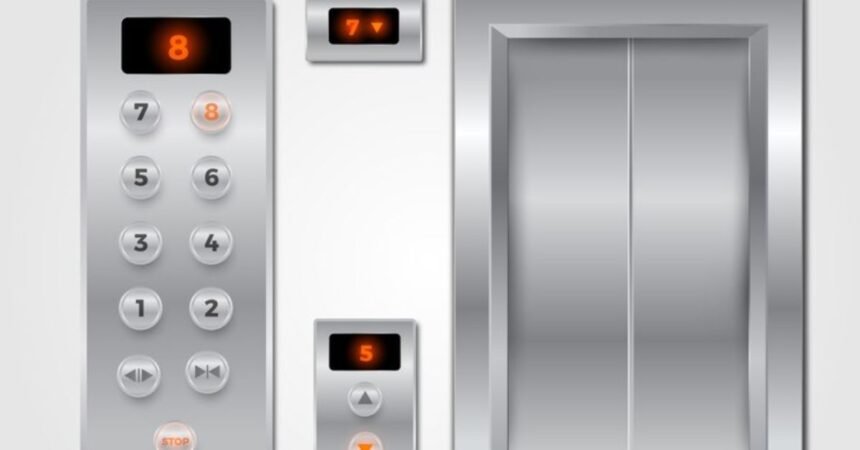Introduction
Elevator buttons play a crucial role in everyday life, often overlooked despite being essential for efficient vertical transportation in buildings. These small yet vital components allow users to interact with elevators, selecting floors and opening doors. From residential complexes to towering skyscrapers, elevator buttons are an integral part of modern architecture and urban life.
This article will explore the key concepts of elevator button, their importance, real-world applications, and how they have evolved in terms of design, accessibility, and technology. We will also examine challenges and solutions related to elevator button systems, ensuring a well-rounded understanding of their role in our daily experiences.
Key Concepts of Elevator Buttons
Elevator buttons are a user interface that allows individuals to control and operate an elevator. Their primary function is to enable passengers to select a floor or request the elevator to stop at a certain level. These buttons can be found both inside the elevator cabin and on the outside, near the elevator doors.
1. Types of Elevator Buttons
There are various types of elevator button based on function and design. These include:
- Floor Selection Buttons: Inside the elevator, these buttons allow passengers to choose their desired destination floor.
- Door Control Buttons: These include “Open Door” and “Close Door” buttons that control the elevator doors directly.
- Emergency Buttons: Typically red and prominently placed, these buttons alert building staff or emergency services in case of an elevator malfunction.
2. Button Materials
Elevator buttons are made from materials that ensure durability and ease of use. Common materials include:
- Plastic: Used for basic buttons in older or simpler elevator systems.
- Glass: High-end elevators may feature glass buttons with touch-sensitive interfaces.
3. Button Layout and Accessibility
The layout of elevator button is crucial for ease of use, particularly for individuals with disabilities. Many elevators now feature buttons with braille, larger surfaces, and contrasting colors to accommodate users with visual impairments or limited mobility.
Importance and Benefits of Elevator Buttons
Elevator buttons are a small but essential part of building infrastructure, offering several benefits that contribute to safety, convenience, and accessibility.
1. Efficient Building Navigation
Elevator button ensure efficient vertical movement within buildings, allowing passengers to reach their destinations quickly. Without functional buttons, navigation within multi-story buildings would be cumbersome and time-consuming.
2. User Safety
In case of emergencies, elevator button serve as vital tools for communication. The emergency button allows passengers to alert building staff or emergency responders if the elevator malfunctions, contributing to overall safety.
3. Accessibility for All Users
Elevator buttons designed with accessibility in mind, such as braille indicators and easily pressable surfaces, ensure that elevators are usable for all individuals, including those with disabilities.
4. Time Efficiency
Elevator button allow users to signal their destination, reducing waiting times. Modern elevator systems prioritize efficiency by grouping passengers traveling to similar floors, reducing overall elevator trips and wait times.
5. Aesthetics and User Experience
In high-end buildings, elevators with sleek button designs enhance the overall aesthetic of the interior.
Applications and Use Cases of Elevator Buttons
Elevator button are found in a wide range of settings, from residential and commercial buildings to hospitals and public transportation hubs. Each environment has specific requirements for the functionality and design of these buttons.
1. Residential Buildings
In apartment complexes and residential buildings, elevator button are a simple yet crucial part of daily routines. These elevators typically feature straightforward button layouts with basic floor selection and door control functions.
2. Office Buildings and Skyscrapers
In high-rise office buildings, efficient elevator systems are vital for managing large numbers of passengers. Buttons in these settings often include destination dispatch systems, which group passengers heading to similar floors to reduce congestion and waiting times.
3. Hospitals and Healthcare Facilities
Elevator buttons in hospitals are designed with accessibility in mind, ensuring that patients, staff, and visitors can easily navigate multiple floors. Additionally, hospital elevators often have buttons for priority or emergency access, allowing medical staff to move between floors swiftly.
4. Hotels
Elevator button in hotels often include special access features, such as key card activation, to restrict access to guest-only floors. Luxury hotels may feature touchscreens or illuminated buttons to enhance the guest experience.
5. Public Transportation Hubs
In airports, subway stations, and other public transportation hubs, elevator button play a key role in guiding passengers through multiple levels efficiently. These buttons are designed to withstand heavy usage and are often equipped with large, intuitive icons for easy identification.
6. Industrial and Service Elevators
Industrial settings require robust elevator button that can handle heavy-duty use and exposure to dust, moisture, or chemicals. These buttons are usually made from durable materials like stainless steel and feature simplified layouts to ensure quick and efficient operation.
Challenges and Solutions in Elevator Button Systems
While elevator buttons serve an essential function, they come with several challenges, ranging from hygiene concerns to accessibility and maintenance. Below, we explore some common issues and offer potential solutions.
1. Hygiene and Frequent Use
Elevator button are touched by numerous people every day, raising concerns about the spread of germs, especially in high-traffic buildings.
Solution:
Modern elevator systems are incorporating touchless technology, allowing users to call elevators through mobile apps or gesture recognition systems. Additionally, materials such as antimicrobial coatings can be applied to elevator buttons to reduce the spread of bacteria.
2. Accessibility
Not all elevator button systems are easily accessible to individuals with disabilities. For example, buttons may be positioned too high for individuals in wheelchairs or may lack braille for visually impaired users.
Solution:
Elevator buttons must be designed according to universal design principles, ensuring that they are positioned at accessible heights and equipped with tactile indicators like braille. Compliance with ADA (Americans with Disabilities Act) standards is also essential.
3. Button Durability
In busy environments like airports or office buildings, elevator buttons may experience wear and tear from frequent use, leading to malfunctioning buttons or worn-out surfaces.
Solution:
Using high-quality materials like stainless steel or reinforced plastic can improve durability. Additionally, regular maintenance checks should be performed to ensure buttons remain functional and responsive.
4. Design Complexity in Modern Elevators
Advanced elevators with touchscreen or digital interfaces may pose challenges for users who are unfamiliar with the technology or prefer traditional button layouts.
Solution:
Touchscreens and digital interfaces should be designed with user-friendly layouts, clear instructions, and alternative input methods for those who struggle with new technologies. Maintaining physical buttons alongside touchscreen interfaces can also accommodate a broader range of users.
5. Energy Efficiency
Elevators in large buildings contribute significantly to energy consumption, and inefficient elevator systems can lead to higher operational costs.
Solution:
Smart elevator systems are being developed to optimize energy use, such as powering down buttons and lights when not in use. Additionally, LED lights in elevator buttons consume less power and have a longer lifespan compared to traditional bulbs.
Future Trends in Elevator Button Design and Technology
As technology evolves, elevator buttons are also undergoing significant innovations. These advancements are focused on improving user experience, accessibility, and safety while incorporating modern design elements.
1. Touchless Elevator Systems
With growing concerns about hygiene, touchless elevator buttons are becoming increasingly popular. These systems allow users to interact with the elevator through gesture recognition, voice commands, or mobile apps, eliminating the need to physically press buttons.
2. Smart Elevators
Smart elevators use algorithms and sensors to improve efficiency and reduce wait times. These elevators can predict peak usage times and group passengers going to the same floors, reducing energy consumption and improving overall service.
3. Voice-Activated Elevators
Voice-controlled elevators are being developed to assist individuals who may have difficulty reaching or pressing buttons. By simply stating their desired floor, users can navigate elevators without physical interaction.
4. Interactive Screens
Many modern elevators feature interactive touchscreens that provide real-time information, such as floor directories, building announcements, and emergency alerts. These screens often replace traditional elevator buttons, offering a more dynamic and engaging user experience.
Conclusion
Elevator buttons may seem like a small component of a larger system, but their design, functionality, and accessibility play a pivotal role in ensuring smooth and safe vertical transportation. From traditional mechanical buttons to advanced touchless and voice-activated systems, elevator buttons have evolved to meet the needs of modern society.
Whether in residential buildings, skyscrapers, hospitals, or transportation hubs, these buttons contribute to user convenience, safety, and overall building efficiency. As technology advances, we can expect even more innovations in elevator button design, improving hygiene, accessibility, and energy efficiency.
In a world that increasingly values convenience and safety, elevator buttons remain an essential part of our daily lives, ensuring we reach our destinations with ease and confidence.
FAQs
1. What materials are commonly used for elevator buttons?
Common materials include plastic, stainless steel, aluminum, and glass.
2. How do touchless elevator buttons work?
Touchless buttons use sensors to detect hand movements or gestures, allowing users to interact without physical contact.
3. Are elevator button accessible for people with disabilities?
Many elevators feature accessible buttons, including braille indicators and buttons positioned at wheelchair height, in compliance with ADA standards.
4. What is a smart elevator?
Smart elevators use technology to improve efficiency by grouping passengers going to the same floors, reducing wait times, and optimizing energy use.
5. Can elevator buttons spread germs?
Yes, frequently touched elevator button can spread germs. Touchless systems and antimicrobial coatings are solutions to this issue.








